The battle of the electric SUVs has arrived, and two of the most anticipated contenders are the Kia EV3 and the Toyota bZ4X. Both vehicles offer impressive specifications, innovative features, and an array of choices for consumers seeking a greener alternative in the automotive market. Let’s delve deeper into what makes these two electric SUVs stand out and how they compare.
Kia EV3 vs Toyota bZ4X – Which car suits you better?
Compare performance, boot capacity, efficiency and price at a glance.
Find out which car is the better choice for you – Kia EV3 or Toyota bZ4X?
Performance and Powertrain
Both the Kia EV3 and Toyota bZ4X share remarkable performance capabilities, but they differ in specific aspects that could sway buyers one way or another. The Kia EV3 boasts a robust electric power output of 204 hp, which translates to responsive acceleration, taking only 7.5 seconds to reach 100 km/h. In terms of torque, the EV3 offers a solid 283 Nm, allowing for a satisfying driving experience.
The Toyota bZ4X, on the other hand, comes with a slightly more powerful front-wheel-drive option, featuring 218 hp and torque ratings of up to 336 Nm in its all-wheel-drive configuration. This slight edge in horsepower allows the bZ4X to accelerate from 0 to 100 km/h in just 6.9 seconds, appealing to those who prioritize speed and agility.
Battery and Range
Both models come equipped with impressive battery capacities, with the Kia EV3 offering two options: a 58.3 kWh battery for a range of 436 km and an 81.4 kWh version extending the range to an impressive 605 km. This flexibility caters well to various driving needs and preferences.
The bZ4X offers a 71.4 kWh battery, providing a driving range of 513 km in its most efficient configuration, while its all-wheel-drive version slightly reduces that to 461 km. Although the bZ4X does not quite match the longer-range offering of the EV3, it still holds its ground among competitors with its respectable range capabilities.
Efficiency and Consumption
When it comes to power consumption, the Kia EV3 has an efficiency rating of 14.9 to 16.2 kWh/100 km, making it a viable option for those looking to minimize charging costs. The bZ4X slightly edges out with a consumption rate ranging from 14.4 to 16.2 kWh/100 km, showcasing Toyota's commitment to reducing energy consumption and maximizing efficiency across their electric vehicle lineup.
Interior and Cargo Space
Inside, both SUVs can accommodate up to five passengers, providing ample space for occupants. The Kia EV3 features a trunk capacity of 460 liters, while the Toyota bZ4X follows closely with 452 liters. While there is only a small difference in cargo space, the design and ergonomics of each vehicle will heavily influence passenger comfort and convenience.
Dimensions and Weight
In terms of dimensions, the Kia EV3 is more compact, measuring 4300 mm in length, while the bZ4X is a more substantial 4690 mm. This might appeal to buyers looking for a more dynamic and agile SUV. The differences in curb weight are noticeable; the EV3 ranges from 1800 to 1885 kg, while the bZ4X weighs between 1970 and 2085 kg depending on configuration. Lighter vehicles often provide better efficiency and handling, although some might prefer the stability offered by the heavier bZ4X.
Technology and Innovations
Both Kia and Toyota have embedded their latest technologies into these electric SUVs. They feature advanced driver-assistance systems, infotainment interfaces, and connectivity options designed to enhance the driving experience. The Kia EV3 comes equipped with innovative safety features, while the bZ4X excels with its Toyota Safety Sense suite and seamless integration of smart technologies.
Conclusion
Choosing between the Kia EV3 and Toyota bZ4X ultimately comes down to personal preference and specific needs. The EV3 shines with its superior range and efficiency, while the bZ4X offers a powerful performance and advanced technology that caters to driving enthusiasts. As the electric vehicle market continues to evolve, these contenders are set to make a significant impact.
Here’s where it gets real: The technical differences in detail
Costs and Efficiency:
Price and efficiency are key factors when choosing a car – and this is often where the real differences emerge.
Kia EV3 has a to a small extent advantage in terms of price – it starts at 30800 £, while the Toyota bZ4X costs 36800 £. That’s a price difference of around 5923 £.
In terms of energy consumption, the advantage goes to the Toyota bZ4X: with 13.50 kWh per 100 km, it’s to a small extent more efficient than the Kia EV3 with 14.90 kWh. That’s a difference of about 1.40 kWh.
As for range, the Kia EV3 performs minimal better – achieving up to 605 km, about 37 km more than the Toyota bZ4X.
Engine and Performance:
Power, torque and acceleration say a lot about how a car feels on the road. This is where you see which model delivers more driving dynamics.
When it comes to engine power, the Toyota bZ4X has a clearly edge – offering 343 HP compared to 204 HP. That’s roughly 139 HP more horsepower.
In acceleration from 0 to 100 km/h, the Toyota bZ4X is clearly quicker – completing the sprint in 5.10 s, while the Kia EV3 takes 7.50 s. That’s about 2.40 s faster.
In terms of top speed, the Kia EV3 performs minimal better – reaching 170 km/h, while the Toyota bZ4X tops out at 160 km/h. The difference is around 10 km/h.
There’s also a difference in torque: Toyota bZ4X pulls a bit stronger with 338 Nm compared to 283 Nm. That’s about 55 Nm difference.
Space and Everyday Use:
Cabin size, boot volume and payload all play a role in everyday practicality. Here, comfort and flexibility make the difference.
Both vehicles offer seating for 5 people.
In curb weight, Kia EV3 is slight lighter – 1800 kg compared to 1970 kg. The difference is around 170 kg.
In terms of boot space, the Kia EV3 offers minimal more room – 460 L compared to 452 L. That’s a difference of about 8 L.
When it comes to payload, Toyota bZ4X barely noticeable takes the win – 495 kg compared to 470 kg. That’s a difference of about 25 kg.
Who wins the race?
The Toyota bZ4X proves to be leaves the rival little chance and therefore becomes our DriveDuel Champion!
Toyota bZ4X is the better all-rounder in this comparison.
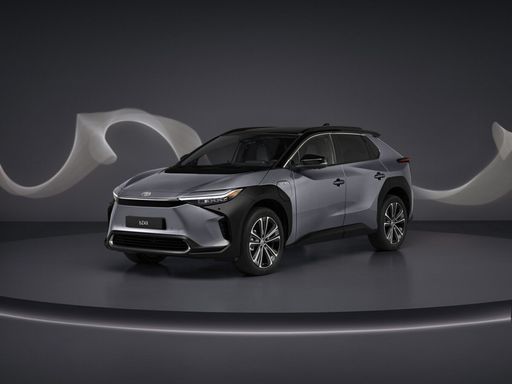 @ Toyota Motor Corporation
@ Toyota Motor Corporation
Toyota bZ4X
Kia EV3
The Kia EV3 arrives as a cheeky, practical electric compact that manages to feel both premium and playful, delivering crisp handling and a roomy cabin that's perfect for urban life. With smart tech, friendly styling and sensible pricing, the EV3 is the kind of car that makes switching to electric feel like a no-brainer without asking you to give anything important up.
details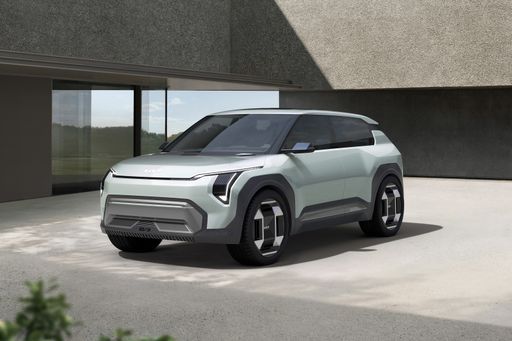 @ Kia Corporation
@ Kia Corporation
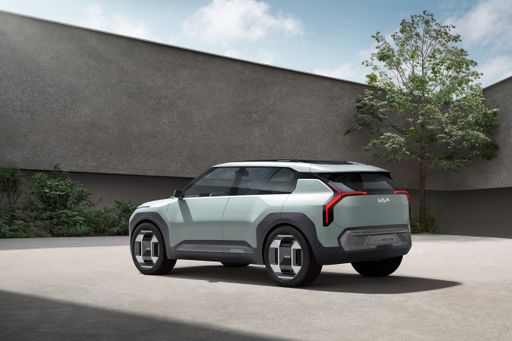 @ Kia Corporation
@ Kia Corporation
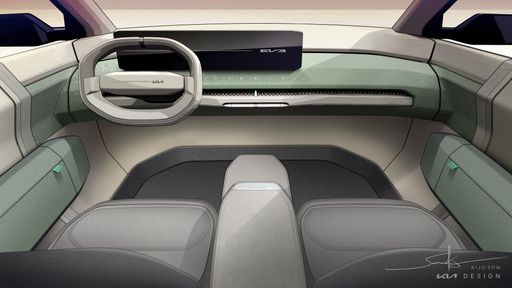 @ Kia Corporation
@ Kia Corporation
Toyota bZ4X
The Toyota bZ4X represents a bold step forward in the brand's commitment to electric mobility, showcasing an innovative design that merges futuristic aesthetics and functionality. Inside, the spacious cabin is thoughtfully crafted to provide comfort and advanced technology, ensuring a pleasurable driving experience. With its impressive range and sustainable vision, the bZ4X sets a new benchmark for environmentally conscious driving without compromising on performance or style.
details @ Toyota Motor Corporation
@ Toyota Motor Corporation
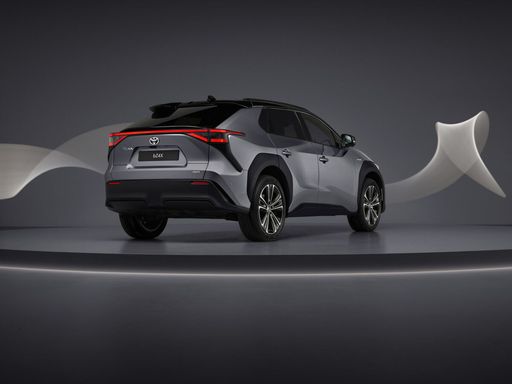 @ Toyota Motor Corporation
@ Toyota Motor Corporation
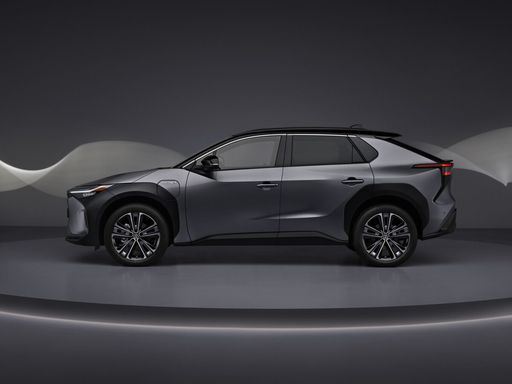 @ Toyota Motor Corporation
@ Toyota Motor Corporation
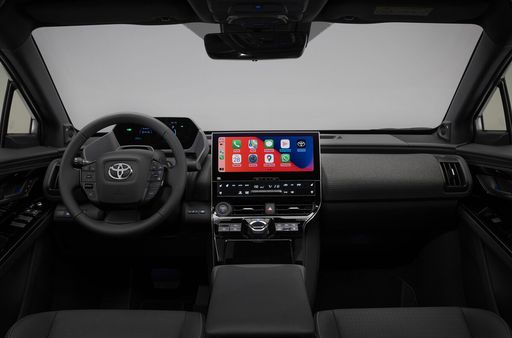 @ Toyota Motor Corporation
@ Toyota Motor Corporation
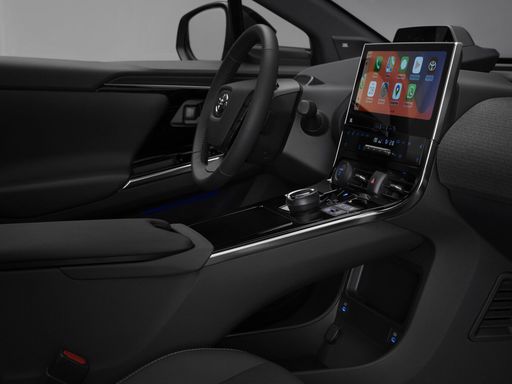 @ Toyota Motor Corporation
@ Toyota Motor Corporation
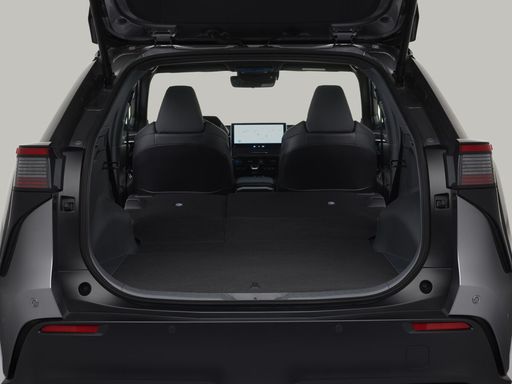 @ Toyota Motor Corporation
@ Toyota Motor Corporation
 @ Kia Corporation
@ Kia Corporation
|
 @ Toyota Motor Corporation
@ Toyota Motor Corporation
|
|
|
|
Costs and Consumption |
|
|---|---|
|
Price
30800 - 41700 £
|
Price
36800 - 48000 £
|
|
Consumption L/100km
-
|
Consumption L/100km
-
|
|
Consumption kWh/100km
14.9 - 16.2 kWh
|
Consumption kWh/100km
13.5 - 16.2 kWh
|
|
Electric Range
436 - 605 km
|
Electric Range
444 - 568 km
|
|
Battery Capacity
58.3 - 81.4 kWh
|
Battery Capacity
-
|
|
co2
0 g/km
|
co2
0 g/km
|
|
Fuel tank capacity
-
|
Fuel tank capacity
-
|
Dimensions and Body |
|
|---|---|
|
Body Type
SUV
|
Body Type
SUV
|
|
Seats
5
|
Seats
5
|
|
Doors
5
|
Doors
5
|
|
Curb weight
1800 - 1885 kg
|
Curb weight
1970 - 2180 kg
|
|
Trunk capacity
460 L
|
Trunk capacity
452 L
|
|
Length
4300 - 4310 mm
|
Length
4690 mm
|
|
Width
1850 mm
|
Width
1860 mm
|
|
Height
1560 - 1570 mm
|
Height
1600 - 1650 mm
|
|
Max trunk capacity
1251 L
|
Max trunk capacity
-
|
|
Payload
470 kg
|
Payload
375 - 495 kg
|
Engine and Performance |
|
|---|---|
|
Engine Type
Electric
|
Engine Type
Electric
|
|
Transmission
Automatic
|
Transmission
Automatic
|
|
Transmission Detail
Reduction Gearbox
|
Transmission Detail
Reduction Gearbox
|
|
Drive Type
Front-Wheel Drive
|
Drive Type
Front-Wheel Drive, All-Wheel Drive
|
|
Power HP
204 HP
|
Power HP
167 - 343 HP
|
|
Acceleration 0-100km/h
7.5 - 7.9 s
|
Acceleration 0-100km/h
5.1 - 8.6 s
|
|
Max Speed
170 km/h
|
Max Speed
140 - 160 km/h
|
|
Torque
283 Nm
|
Torque
265 - 338 Nm
|
|
Number of Cylinders
-
|
Number of Cylinders
-
|
|
Power kW
150 kW
|
Power kW
123 - 252 kW
|
|
Engine capacity
-
|
Engine capacity
-
|
General |
|
|---|---|
|
Model Year
2024
|
Model Year
2024 - 2025
|
|
CO2 Efficiency Class
A
|
CO2 Efficiency Class
A
|
|
Brand
Kia
|
Brand
Toyota
|
What drive types are available for the Kia EV3?
The Kia EV3 is offered with Front-Wheel Drive.
The prices and data displayed are estimates based on German list prices and may vary by country. This information is not legally binding.
